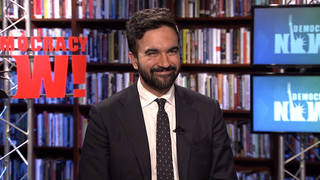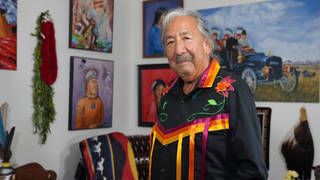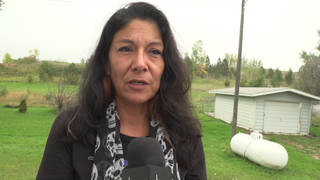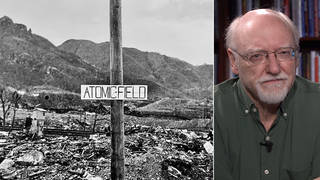
Topics
Guests
- James Bamfordis an investigative journalist and author of ??The Puzzle Palace, which documents thehistory of the National Security Agency. The sequel to the book, ??Body of Secrets, was released last year.
- Christopher Simpsonis a Professor of Communications at American University in Washington, DC. He is alsoauthor of ??Blowback among other books.
While the Pacifica Campaign and other free speech radio activists were preparing to make history last week, the BushAdministration was busy trying to undo history. Following other moves to bring the country back to an earlier, morewar-like era, the administration set about rewinding the nuclear clock, erasing some of the fragile gains made by theanti-nuclear movement over the last few decades.
The rewind began in earnest on Tuesday, when the Administration published its annual Nuclear Posture Review. In thedocument, the President announced that he did not intend to destroy some 4000 nuclear warheads, as Bush had promisedRussian President Vladmir Putin in their arms talks in November. Instead, he declared that the United States wouldde-activate and then store the weapons, effectively putting them on hold for a later date. The announcement has onlyfurther incensed the Russians, who were already angered by the administration’s decision to withdraw from theAnti-Ballistic Missile Treaty just weeks ago.
At the same time, and in the same document, the administration also raised the possibility that it would resumeunderground nuclear testing in the years ahead. The United States has refrained from such tests since 1992, when Bushsenior placed a moratorium on underground explosions. Up until that point, the government had launched regularunderground tests at the Nevada Test Site, an infamous sprawl of nuclear and conventional weapons laboratories aswell as waste storage facilities in the middle of Shoshone Nation lands. Should tests resume, the administrationwould be in violation not only of the Nuclear Test Ban Treaty but also the 1863 Ruby Valley Treaty with the Shoshone.
But last week’s nuclear back-pedaling did not stop there. On Thursday, the Secretary of the Department of Energy,Spencer Abraham, formally recommended that Yucca Mountain, in Nevada, be used to bury thousands of tons of highlyradioactive nuclear waste. Arguing that national security after Sept. 11 required a safe storage site, Abraham putan end to the years’ long search for a super, one-stop nuclear dump, capable of storing the nation’s waste. YuccaMountain is an ancient volcano that lies in the heart of Shoshone territory, just 90 miles from Las Vegas. It haslong been considered a sacred site by the Shoshone.
Guest:
- Susi Snyder, Program Manager, Shundahai Network. Susi Snyder was recently declared a Las Vegas Hero bythe local City Weekly paper for her work to shut down the Nevada Test Site. She spent 10 days in jail this year fororganizing a blockade of the test site to protest the subcritical nuclear weapons tests, and she chained herself tothe overhang above the main entrance to the Las Vegas Federal Building in 1998 to protest the nuclear weaponsprograms.
- Ian Zabarte, Secretary of State for the Western Shoshone National Council which has always opposed U.S.nuclear programs and the military occupation of their lands. He lives at Cactus Springs Nevada, which is about 18miles from the Nevada Test Site.
- Alice Slater, Director, Global Resource and Action Center for the Environment. She is on the Board ofdirectors of the Global Network to Keep Space for Peace and the U.S. Nuclear Abolition Campaign.
Related link:











Media Options